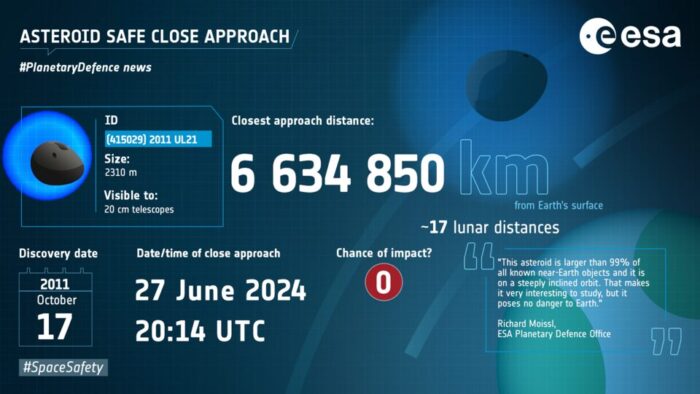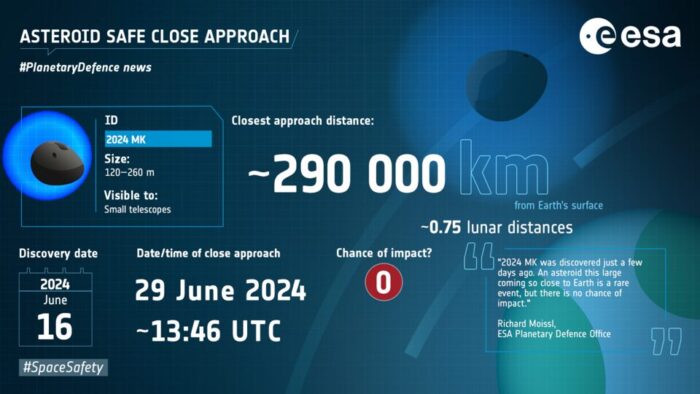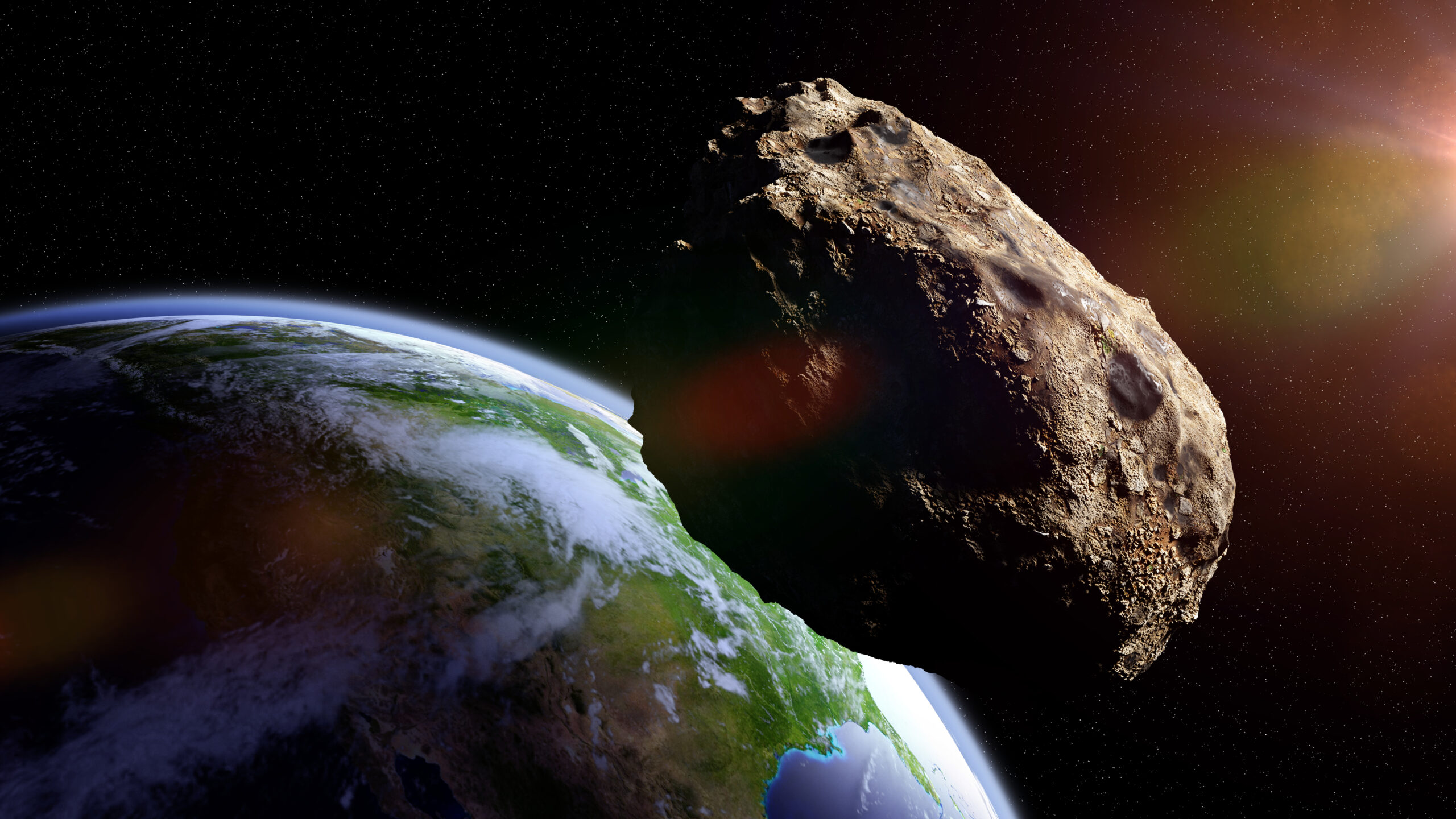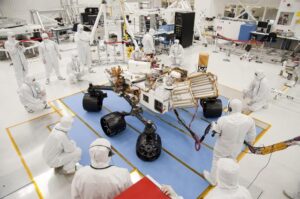If 2011 UL21, a mountain-sized object hurtling through space at 93,000 kilometers per hour, hit Earth, things could get dicey.
It won’t, astronomers say — but it will come closer to it than any other celestial projectile in the past 125 years. And it will put on a live show you can watch on the internet or even with a decent telescope.
2011 UL21 makes an official close pass of Earth once every three years. That’s when it orbits within 1.3 astronomical units of the Sun — the criteria for a “near-Earth” asteroid. Near-earth asteroids zip past Earth at a cozy distance of 45,000,000 kilometers or closer.
In this case, much closer.
No chance of catastrophe
2011 UL21 will buzz the tower on June 28-29 at about 6.6 million km. It’s the closest approach the asteroid has made in over a century, according to NASA’s Jet Propulsion Laboratory.

Image: ESA
It’s a moot point because there’s zero chance a collision will occur, the European Space Agency (ESA) reassured, but 2011 UL21 would wreak mass destruction if it hit Earth.
Spacereference.org estimates 2011 UL21’s size to be 1.7-3.9 kilometers in diameter — about five times smaller than the space rock that killed the dinosaurs. First observed in 2011, it’s bigger than 99% of all known near-Earth asteroids.
If an asteroid were the size of a 20-story building, it would be just 3% as big as 2011 UL21. Still, it would rip into Earth with a force similar to today’s biggest nuclear bombs, completely destroying any major city it hit.
Such collision damage could spread to a continental or even planetary scale. For now, though, it will harmlessly delight stargazers by making a close, bright pass.
A livestream by the Virtual Telescope Project (VTP) will broadcast the asteroid’s hurtling progress once it starts approaching this Thursday, June 27. The feed will come from the Bellatrix Astronomical Observatory in Ceccano, Italy.
Surprise twin visitor
Armchair astronomers in the northern hemisphere with decent telescopes may be able to catch a glimpse of it during its brightest period, from June 28-29, according to LiveScience.
More alarmingly, its arrival will coincide with another massive near-Earth object that will pass — harmlessly — much closer but wasn’t discovered until just days ago.
2024 MK will cruise past Earth at about 290 km. The ESA spotted it on June 16, and its fly-by date is June 29. It is between 120m and 260m wide.

Image: ESA
“There is no risk of 2024 MK impacting Earth,” the ESA said. “However, an asteroid this size would cause considerable damage if it did, so its discovery just one week before it flies past our planet highlights the ongoing need to improve our ability to detect and monitor potentially hazardous near-Earth objects.”
Safe in a shooting gallery?
Coincidentally, the close-quarters celestial action all leads up to Asteroid Day on June 30. The UN-endorsed event commemorates the largest observed asteroid strike on record: the 1908 Tunguska Event, in which an airburst decimated a largely desolate Siberian region.
If it seems like the Earth is a sitting duck in the shooting gallery of space, well, so is everything else in space. But astronomers now think there’s very little chance an asteroid similar to 2011 UL21 will hit Earth for the next 1,000 years.
Then again, close calls are likely. Keep your eyes on the sky in 2029. That’s when Aphophis, an asteroid named after the Egyptian god of chaos, will visit next. It’s as big as the Empire State Building — and it will thread the needle between us and our orbiting satcom satellites.






